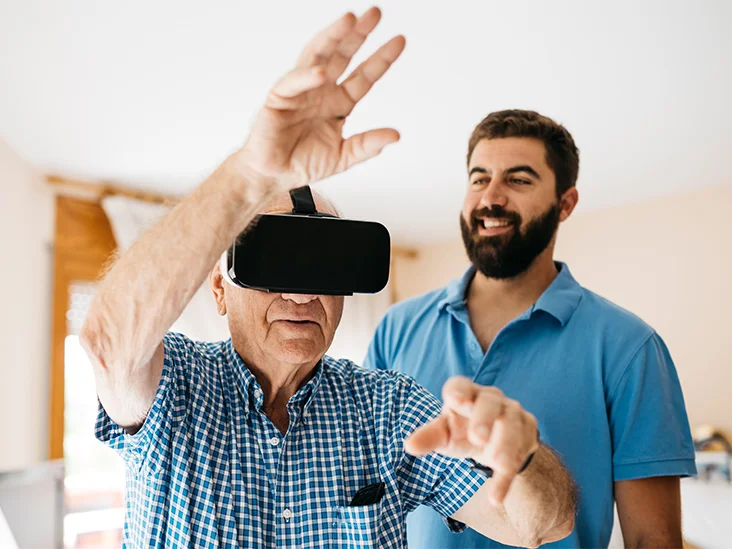Virtual Reality Is Now Being Used to Help People with Dementia

Modern technology has been used for years to address challenges faced by seniors. Nintendo Wii’s motion gaming technology, which allows users to play virtual tennis and engage in other virtual activities, became quite popular in nursing homes as a way to get residents to exercise. Microsoft’s motion gaming sensor, Kinect, has helped patients recover from painful medical procedures. In addition, numerous wearable and smart appliance technologies are being created to allow seniors to live at home rather than moving to a long-term care facility.
Now virtual reality is helping seniors who struggle with loneliness, depression and even dementia. An article in the Washington Post explored this development. The article focuses on a physician in the San Francisco Bay area, Sonya Kim, who uses virtual reality headsets to treat lonely and depressed seniors. She has found that the therapy makes a dramatic impact on her patients’ lives. “It lifts the moods of those patients who are so anxious and bored or depressed because they think no one cares about them,” said Kim. “We’ve brought beautiful places to seniors who can’t go anywhere.” Kim has seen unresponsive or violent patients change dramatically after only a few virtual reality sessions.
One male dementia patient in particular stands out in Kim’s mind. The patient was always hunched over and continuously anxious. He never took part in group sessions, choosing instead to sit by himself in the corner of the room. However, when he donned a virtual reality headset, he became more alert, relaxed and engaged with the scenes being depicted in the headset. He even sang along with one of the scenes he was watching. Upon viewing a video of the man’s reaction to therapy, his wife nearly cried.
Kim has received testimonials from the relatives of patients, as well as caregivers, who report that the relaxing effects and other benefits of virtual reality sessions can last for weeks. In the case of the dementia patient who started singing during one of his sessions, the man’s family told Kim that they were no longer worried about him pulling his hair out or striking his caregivers.
So why does this technology work? Even Kim is not absolutely certain, but she has a theory: Immersion in a virtual reality world stimulates patients’ brains in a number of ways. She hypothesizes that virtual reality allows some of her patients’ neural pathways to be reactivated. She is now trying to raise money for her two companies, Aloha VR and One Caring Team, to expand their virtual reality programs and to work with other organizations that are exploring different applications of virtual reality. https://www.nytimes.com/2022/05/06/well/mind/virtual-reality-therapy-seniors.html



